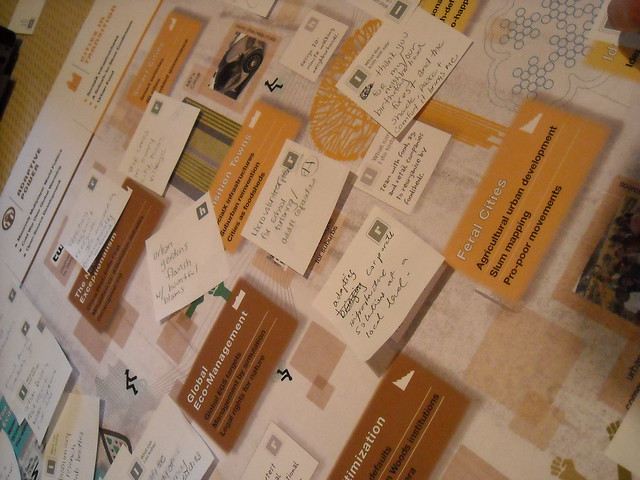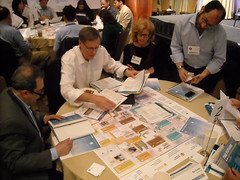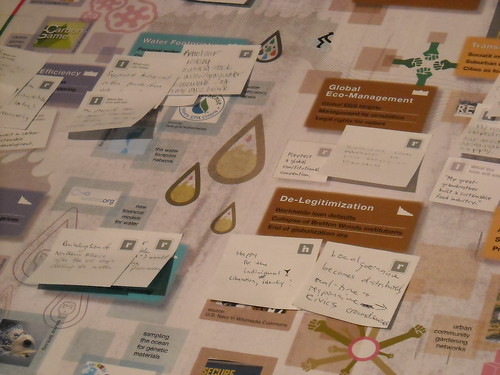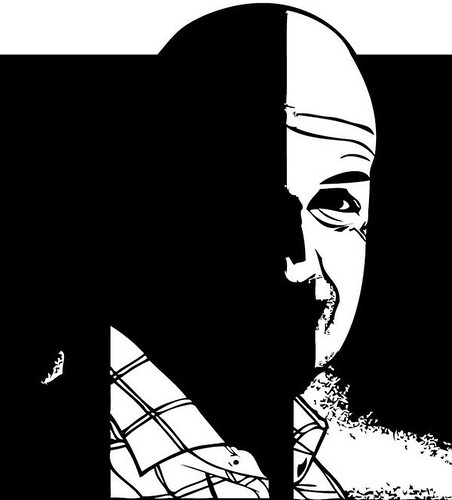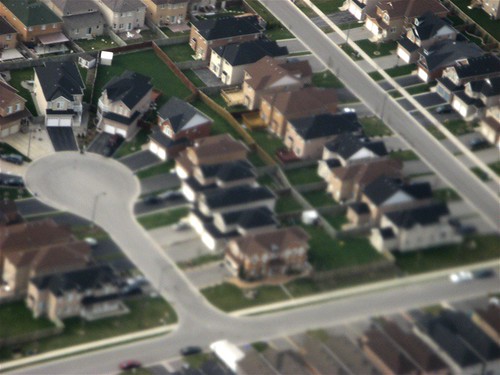An Odonomy of Savannah IV: Origins
~ part iii ~
the middle class churn
If John Locke had a hand in shaping Savannah, what insights can he give us to understand life in the latter day suburb of America? Our love for civil society, as represented in our love for religion, volunteerism, campaigning, fundraising, organizing and any noble service (particularly military) were abundantly present in colonial Savannah, but more than anything I think of the respect paid by the Savannah ward plan for the family unit. As in today's suburbs, every individual dwelling was given an equal shot at independent enterprise, the right to “the pursuit of happiness”. Savannah’s equal lots posit the importance of occupations as mutually interchangeable and equivalent
in a way. I cannot help but to think how much this same respect for work life and occupations similarly forms the bedrock of many of the conditions that comprise America’s economic and social fabric today.
Americans, like people everywhere of course, take great pride in their occupations, a matter of core identity to most of humanity. What is behind this pride is the more humble sentiment that one is plugged into one's community. Most people want (or allow) others to know exactly how they are contributing to their greater community. How they are reciprocating. How they are useful or how they are advancing things and even shaking things up. In the suburban context, it is simply easier to “reciprocate” in communities of peers not distant from one’s own class, ethnicity and upbringing because the exchanges are less burdened and less open to question. (My friend Tamara Park prodded exactly this American psychosis for creating reciprocal tacit expectations in her book
Sacred Encounters; I myself was a ...hmm... bungler in that exchange).
When pioneering in hostile or shifting territories, the ante to reciprocate is upped further. Interestingly, during these exact times of heightened stakes, where social relationships return to Locke’s “natural state”, questions of status may suddenly become fluid and “peer” categories can be pricked to transcend the divergent social backgrounds and contexts that separate them. We can embrace the Other in such times. Savannah tells us more about this dynamic.
An example of where this reciprocating pioneering phenomenon can be found on display is in ABC's series
Lost, a tale of “shipwrecked” fault-ridden/down-and-out strangers marooned on a mysterious island.
Lost works so well as an American fable, I believe, because, for one, it shakes up traditional peer networks (American story-telling, like the Bible, is so filled with a love for the topsy-turvy tales of the table-turning, social-leveling, come from behind, little man gets his day, David vs. Goliath variety). Secondly, especially by using the device of counterposing the background stories of its characters as they navigate their new relationships on the island,
Lost raises the antes of peer connection that Middle-America so appreciates in the gut.
Lost tells us why we love to a fault our sharp Jacks and Kates, our deadly Sayids, our hey man Hurleys and our resolute but unpredictable Sawyers. These are the kind of people we reciprocate with, even if it is often done by the seat of our pants against the grain of good reason. We relate to the characters in
Lost because we are the children of pioneers after all.
Lost returns us to Locke’s “natural state” of man, where life is a shifting stage of allegiances held in tenuous balance (interestingly, the character in Lost most grafted to the Island is not accidentally named “John Locke” himself). What drives the action in the island is the tension between our need to reciprocate with our tribe and the desire to correct or transcend our fate. Towards evil ends these dual motivations diverge, towards good ends, they converge. This double-pronged pioneering heat-seeking state, pitted and expanded as it has been by the American Dream, is not going away any time soon. It behooves the urban designer to think more about it. Could it actually be in the egalitarian ethos that patterns our culture?
Case in point: Savannah's utopian, equal-lot ward grid was so successful in Savannah that Savannah did not depart from propagating it to as late as 120 years after its founding! In that tenacity alone, Savannah was very prophetic about the dominant equal-lot pattern of residential land subdivision in America's centuries since. (Sadly, the injunction barring slave ownership did not last as long in Savannah--perhaps a good reason Savannah’s economy never usefully industrialized and diversified from its agrarian dependencies to grow into a harbor-fed metropolis like America’s historic port cities elsewhere on the Eastern seaboard).
Savannah's Origin tells us that settlers are simply seeking a fair chance at prosperity and the succor of fellow travelers, who, if not always peers in their ambitions, are certainly to be treated as such. The sawyers, the smiths, the millers, and tanners of colonial Savannah created the economic churn of Savannah and they formed the bedrock of a startlingly active civil society (here is where the first orphanage in America was founded – not, may you duly note, in Philadelphia or Boston!). The benefit of not existing alone in the homesteading enterprise, that on your street or in your church or school district is a community of folks of similar life experience – with mutually beneficial talents and skills and philanthropic motivations – actually inspires, sharpens and shores up independent enterprise. This is especially true for pioneering communities. I call this generative drive the “middle class churn”. At its root is an ethos of egalitarianism, a mutually reinforcing social drive, which produces the economic conditions that lifts the boats of all the participants that support and surround it. The labor unit in the egalitarian and liberal context is one which becomes exponentially more generative the better connected and coordinated and socially level people are with one another. This connection does not necessarily imply a personal connection, all it implies is that the services and products it produces can be enjoyed and accessed by more than a select subset of individuals. In fact, the middle class churn is an impersonal drive, to borrow from Adam Smith, an “invisible hand”. The difference between colonial Savannah and today is that the ipod and the networked office cubicle, not the need to farm and homestead, causes us to reciprocate in concert and share information and so create greater value and demand for our products and services.
Behind the less useful urbanist kind of polemic we often engage in (admittedly myself included) is a disdainful strain that treats the burb as so much blanched snooze-land of conformity thrown up in the landscape. Perhaps, like Savannah, we need to tolerate the condition of “sameness” a little more and poke and prod its squishy surface to see if the filling is not actually more diverse and dynamic than we suppose it or can easily get at with our urbanist forks. We may be judging the book by the cover and dismissing the insight it could offer. Like it or not, our burb-lovin’ North American folk (and Aussies/Kiwis) are the children of the British (humanitarian and pragmatic) Enlightenment. We need to explore and appreciate more the “snooze” condition of suburbia,
as Lars Lerup encourages us to. “
Snooze”, as Lerup posits it, can refer to the liminal state between dream-land and wakeful activity, where exciting things actually do happen and ideas, actions and new consequences are teased and resourced into being.
Moreover, the need to mow that lawn and the need to generate a new economic enterprise may actually spring from the very same desire to plug into – not check out of – community. We have underestimated the suburb’s role in tossing the ethnic “salad bowl” in better more generative more socially transcendent ways than we give it credit for. Just try to convince me that your gentrifying urban neighborhood is any less socially stratified and clumped than today’s outer ring communities. Yes, I realize that the “Others” in the urban neighborhood are more physically proximate and commercially connected to each other than in the burb, but, often, this is not represented in actual social terms. What bridges the social distance rather are
Lost-like transgressions of social order as well as the connections that are created by the actual concentration of socially active connectors…i.e. real people with trans-communal or humanitarian agendas, which increasingly are just as likely to converge now in the suburb as in the inner city.
In short, urban planners of America, we need to understand that the greater challenge is inviting that American society (that we have, after all, helped to create) to incorporate better the advantages that small-footprint urbanism could provide it. We need to unplug urbanism to create greater reciprocating investments that increase the returns of the middle class churn. We need to get the smart phone to do exactly what the auto did for the last half-century. That implies for us urban designers a search for forms like Savannah’s, where creating access to opportunity for the greater number of inhabitants is for the benefit of everyone. Where the single-unit enclave is in contact with the open conditions that benefit social/civic identities, urban economic processes (what I call “zoning for the fourth dimension”), civil plurality and social integration.
Savannah, which was zoned single-family at its outset, is a double-arrowed sign post of where we came from and where we could be headed. Ask not how we can retrofit the suburb, but how urbanism can be emboldened to create a home for our suburban peeps. These are the same people, after all, that made that previous half-century in America the single most outrageous leap, in gross per capita terms, of personal wealth generation that history has ever known (and which, despite our early 21st century bungles, is in the process of scaling out globally now at a colossal and more interesting and more urban form directly as a result of it).


